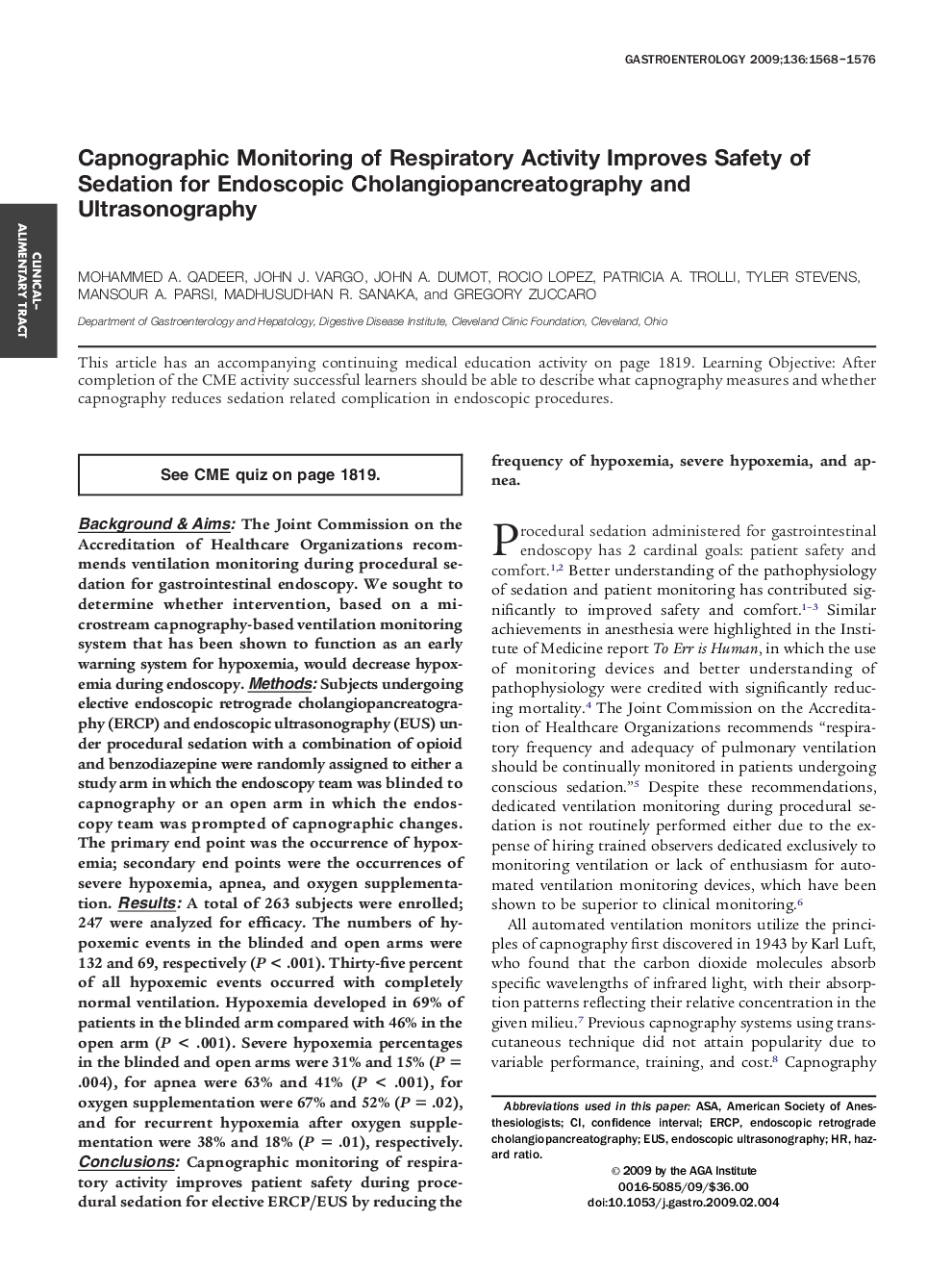| Article ID | Journal | Published Year | Pages | File Type |
|---|---|---|---|---|
| 3295079 | Gastroenterology | 2009 | 9 Pages |
Background & AimsThe Joint Commission on the Accreditation of Healthcare Organizations recommends ventilation monitoring during procedural sedation for gastrointestinal endoscopy. We sought to determine whether intervention, based on a microstream capnography-based ventilation monitoring system that has been shown to function as an early warning system for hypoxemia, would decrease hypoxemia during endoscopy.MethodsSubjects undergoing elective endoscopic retrograde cholangiopancreatography (ERCP) and endoscopic ultrasonography (EUS) under procedural sedation with a combination of opioid and benzodiazepine were randomly assigned to either a study arm in which the endoscopy team was blinded to capnography or an open arm in which the endoscopy team was prompted of capnographic changes. The primary end point was the occurrence of hypoxemia; secondary end points were the occurrences of severe hypoxemia, apnea, and oxygen supplementation.ResultsA total of 263 subjects were enrolled; 247 were analyzed for efficacy. The numbers of hypoxemic events in the blinded and open arms were 132 and 69, respectively (P < .001). Thirty-five percent of all hypoxemic events occurred with completely normal ventilation. Hypoxemia developed in 69% of patients in the blinded arm compared with 46% in the open arm (P < .001). Severe hypoxemia percentages in the blinded and open arms were 31% and 15% (P = .004), for apnea were 63% and 41% (P < .001), for oxygen supplementation were 67% and 52% (P = .02), and for recurrent hypoxemia after oxygen supplementation were 38% and 18% (P = .01), respectively.ConclusionsCapnographic monitoring of respiratory activity improves patient safety during procedural sedation for elective ERCP/EUS by reducing the frequency of hypoxemia, severe hypoxemia, and apnea.
